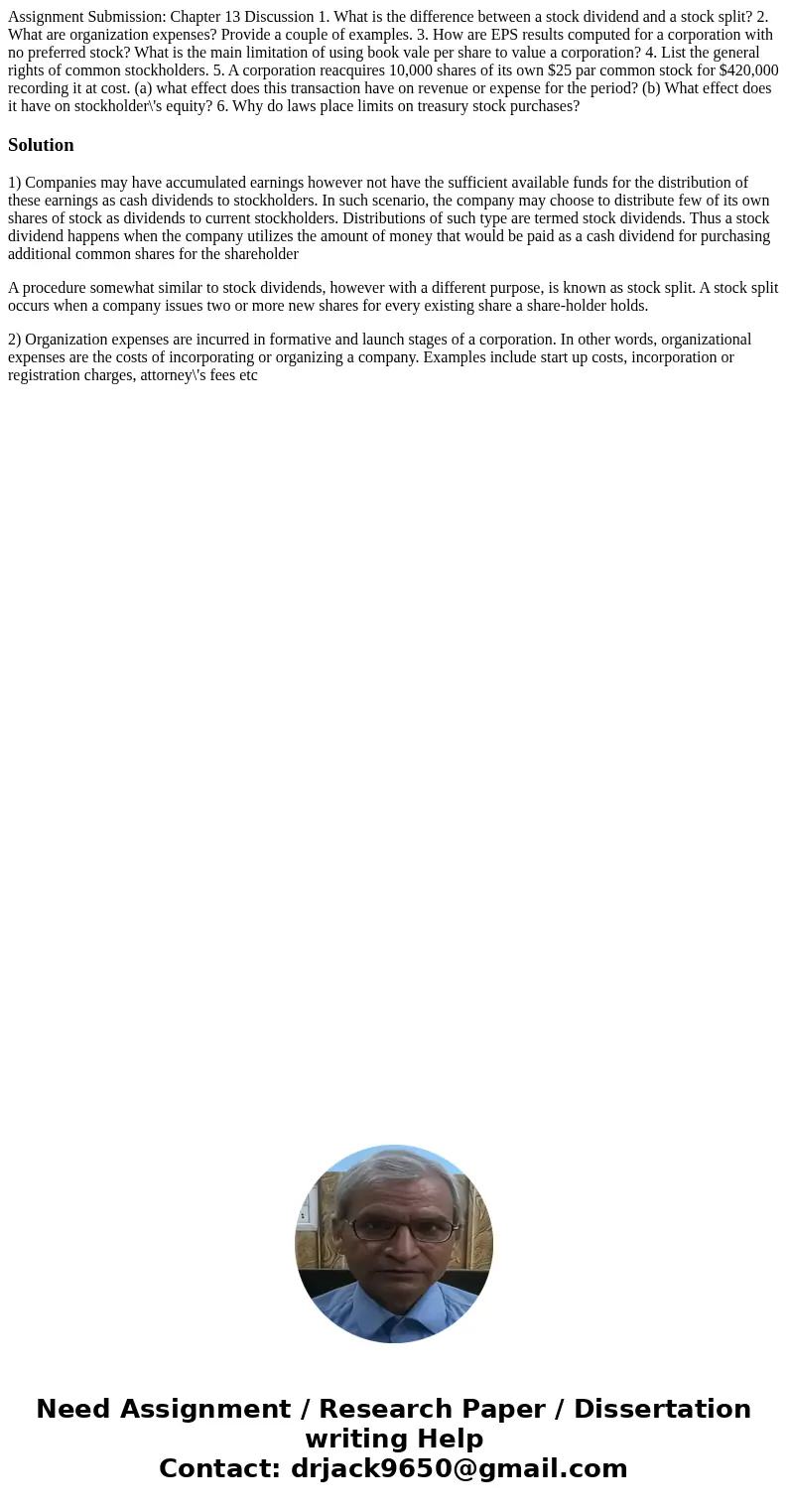Assignment Submission Chapter 13 Discussion 1 What is the di
Solution
1) Companies may have accumulated earnings however not have the sufficient available funds for the distribution of these earnings as cash dividends to stockholders. In such scenario, the company may choose to distribute few of its own shares of stock as dividends to current stockholders. Distributions of such type are termed stock dividends. Thus a stock dividend happens when the company utilizes the amount of money that would be paid as a cash dividend for purchasing additional common shares for the shareholder
A procedure somewhat similar to stock dividends, however with a different purpose, is known as stock split. A stock split occurs when a company issues two or more new shares for every existing share a share-holder holds.
2) Organization expenses are incurred in formative and launch stages of a corporation. In other words, organizational expenses are the costs of incorporating or organizing a company. Examples include start up costs, incorporation or registration charges, attorney\'s fees etc

 Homework Sourse
Homework Sourse